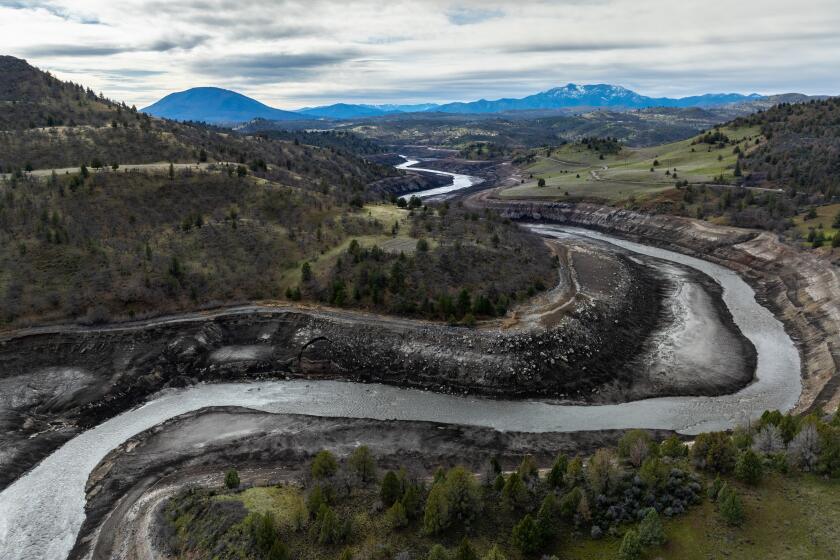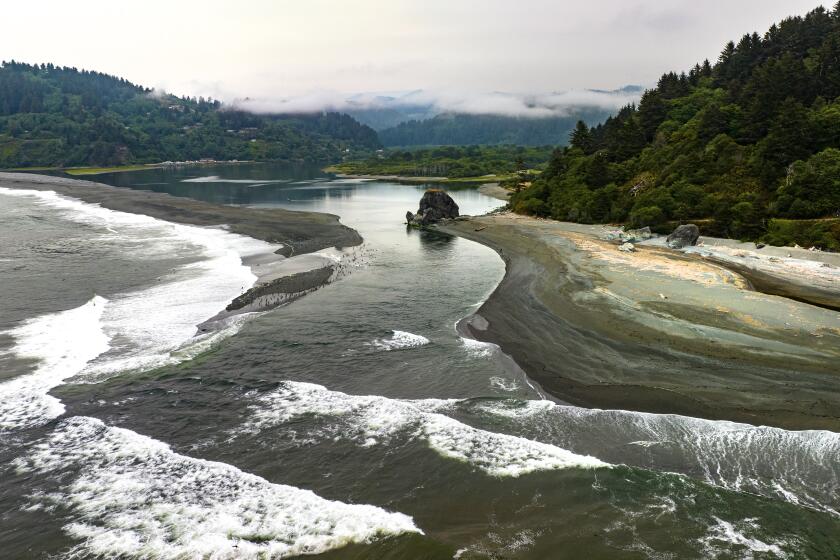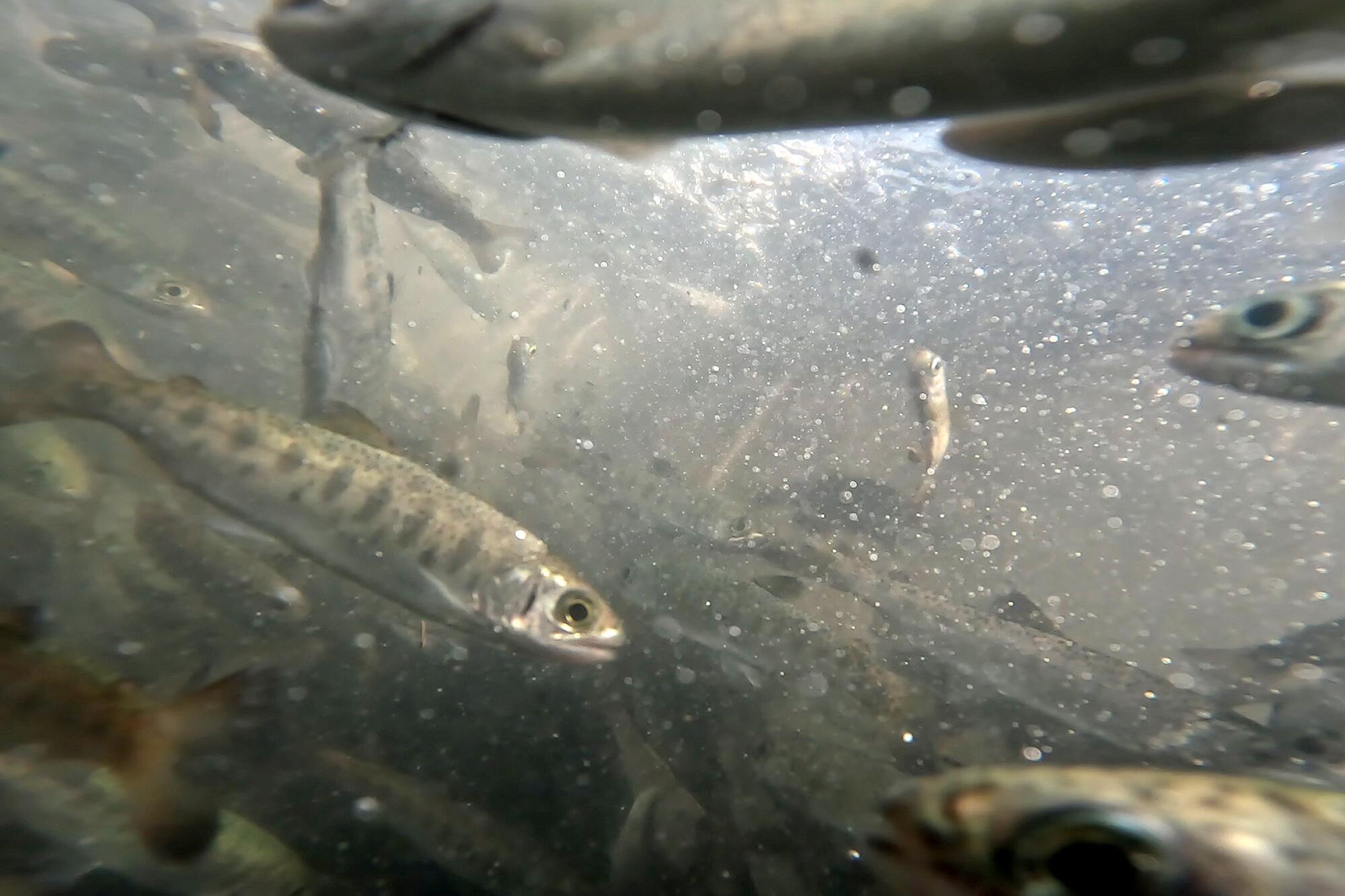
- Share via
While work crews continued dismantling dams on the Klamath River, leaders of four tribes gathered on a riverbank last week to watch and offer prayers as a valve on a tanker truck was opened. From a chute, a stream of water filled with wriggling fish poured into the river.
Over two days, workers from the California Department of Fish and Wildlife released 16 truckloads of juvenile salmon that were raised in a newly built hatchery. About 500,000 salmon swam downriver, and tribal leaders said they expect these fish will flourish when they migrate back upstream in a few years to spawn in a free-flowing river.
“They’re a symbol of hope,” said Phillip Williams, a member of the Yurok Tribal Council.
Williams said as he watched the fish disappear into the river that he thought about how he and many other tribal members will be able to catch some of those salmon when they return in three or four years.
“They’re going to feed families,” Williams said. “So that was really, really emotional.”
Aggressive and impactful reporting on climate change, the environment, health and science.
The young fish were raised at the Fall Creek Fish Hatchery and included about 90,000 coho salmon, a threatened species, as well as more than 400,000 fall-run Chinook salmon.
The last time state workers released Chinook salmon in February, they let loose more than 800,000 fish in a tributary upstream of Iron Gate Dam, which is slated to be removed, and the fish were later found dead in the river. Biologists determined the salmon died as they passed through a tunnel beneath the dam.
To prevent that from happening again, state officials selected another location just downstream of Iron Gate Dam.
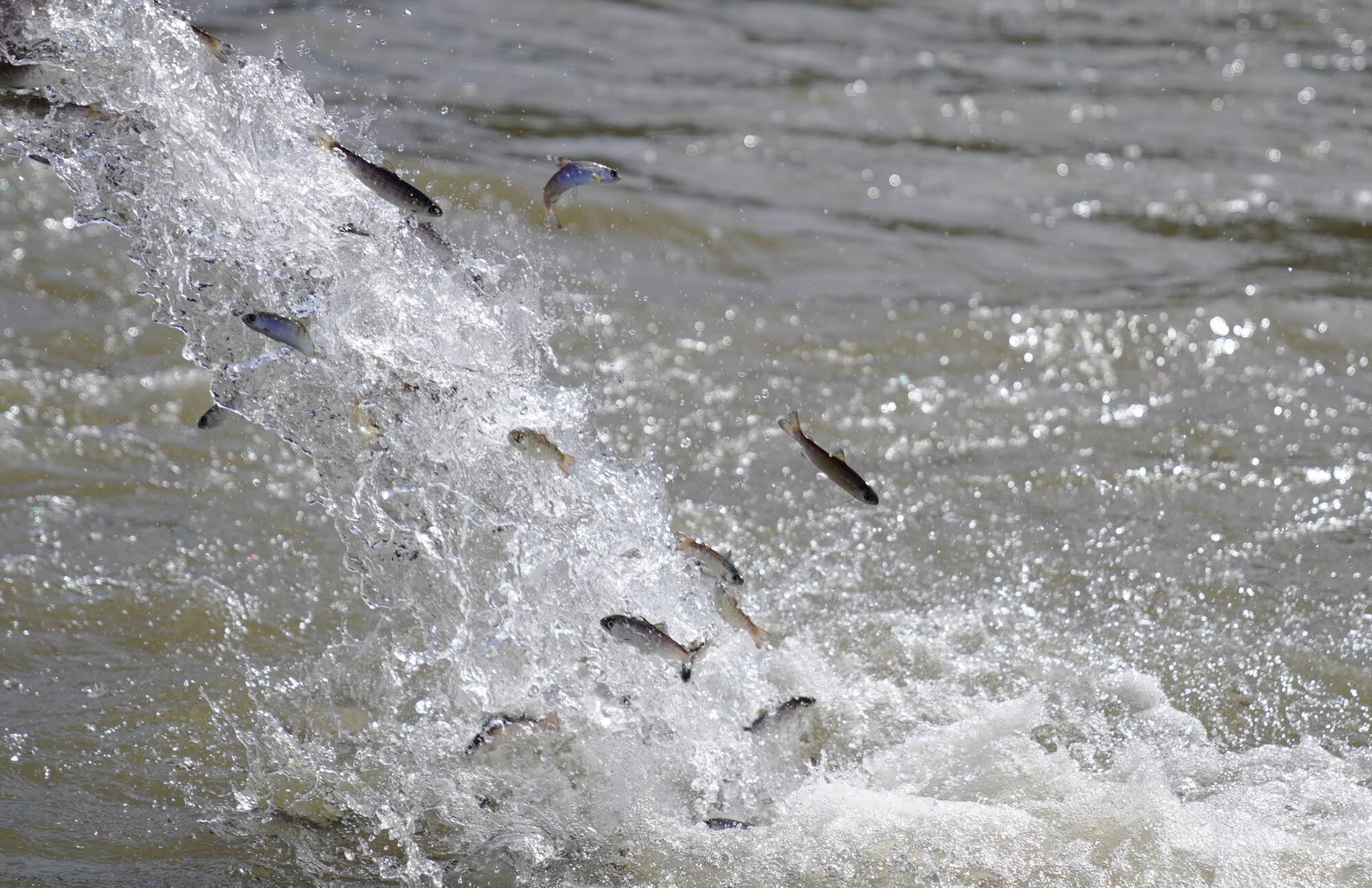
They also ran a test ahead of time, placing groups of young salmon into the river in 2-foot-long plastic cylinders, called “live cars,” to ensure the water quality was right for the fish to survive their journey to the ocean. That two-day test confirmed the fish stayed healthy in the river.
This time, state officials said the release was a complete success.
Karuk Tribe Vice Chair Kenneth Brink sang as the stream of fish-filled water gushed into the river within sight of the dam. Others offered prayers.
“This river is our church, and that salmon is the cross on that church,” Brink said.
“It’s going to be a very, very, very healing experience to be able to see the salmon come back, to have our religion come back, and to be able to live as Karuk people,” he said in a video recorded after the release. “It’s like a new beginning.”
Reservoirs have been drained as the nation’s largest dam removal effort advances on the Klamath River, and an effort to restore the watershed is taking root.
Leaders of the Shasta Indian Nation and the Quartz Valley Indian Tribe also watched as the salmon headed downstream.
It was the first major release of coho salmon into the Klamath since the removal of four dams began last year.
Water is now passing through tunnels in three remaining dams near the California-Oregon border, and reservoirs that once submerged valleys have been drained.
Work crews have been blasting and tearing into one concrete dam. Sometime this fall, the dams are scheduled to be completely removed, reestablishing a free-flowing stretch of river for the first time in more than a century. Once the dams are gone, salmon will be able to swim upstream and spawn along about 400 miles of the Klamath and its tributaries.
Some of the fish that were released are expected to return in a few years as adults to Fall Creek Fish Hatchery, a $35 million facility that was built as part of the dam removal agreements between California, Oregon and the utility PacifiCorp, which operated the dams.
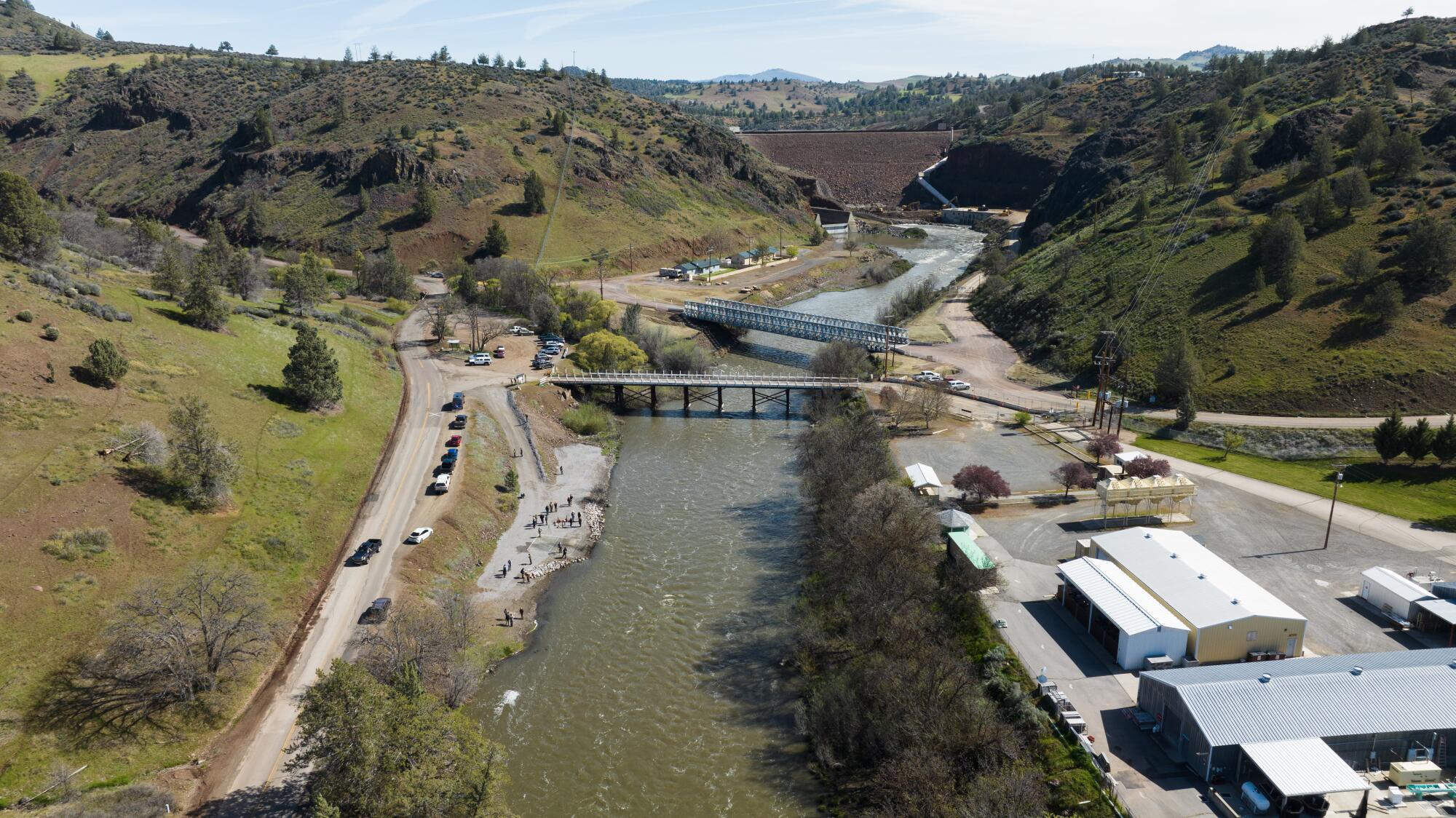
Some of the fish are also expected to be among the first to spawn in the wild along stretches of the river that were previously sealed off by the dams.
“These fish are going to be the fish that help the population that comes back,” said Charlton “Chuck” Bonham, director of the California Department of Fish and Wildlife.
The draining of the reservoirs this winter sent muddy, sediment-laden water flowing downstream. The abrupt worsening of water quality caused a drop in the amount of oxygen in the water, killing fish including nonnative perch, bluegill and bass that had been introduced in the reservoirs.
The state’s tests have shown the river conditions have improved and are now suitable for salmon to thrive, Bonham said. “The releases over the last couple of days show the river is good and only going to get better.”
Native activists fought for years to build support for taking down dams on the Klamath River in Northern California. Now, they hope removing the dams will help save their salmon.
Later in the spring, state hatchery managers plan to release nearly 2 million Chinook salmon smolts into the river.
Scientists expect that the $500-million dam removal project, the largest in history, will help boost salmon populations in the coming years.
Salmon populations have suffered declines in recent years, and fishing for Chinook salmon was banned along the California coast this year for a second year in a row.
Leaders of the Yurok and Karuk tribes plan to decide soon how much, if any, fishing they will allow this year.

